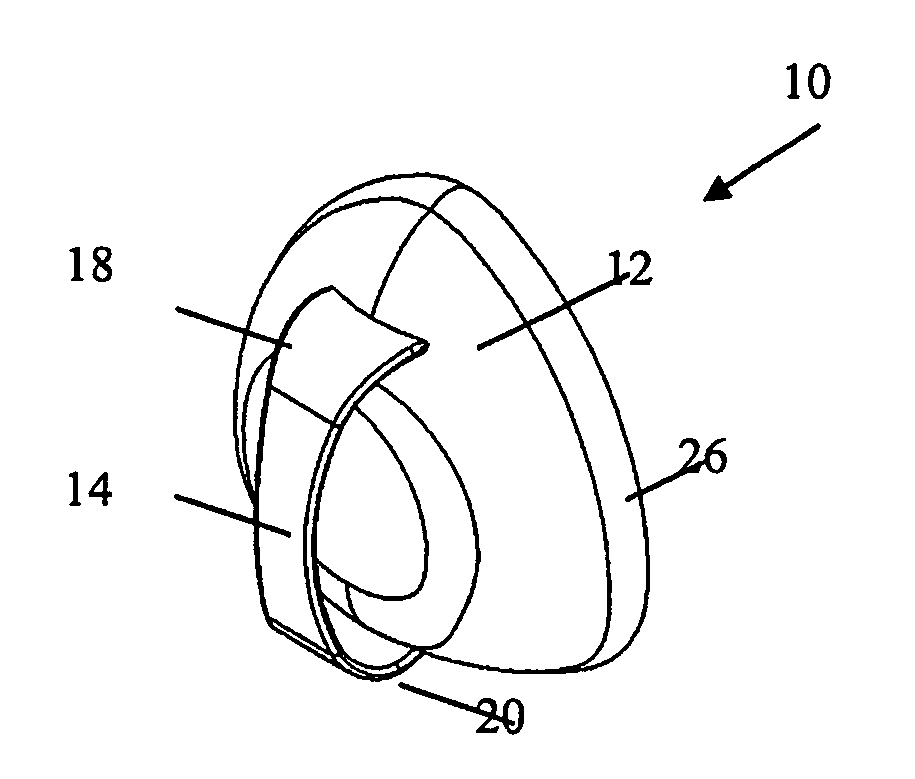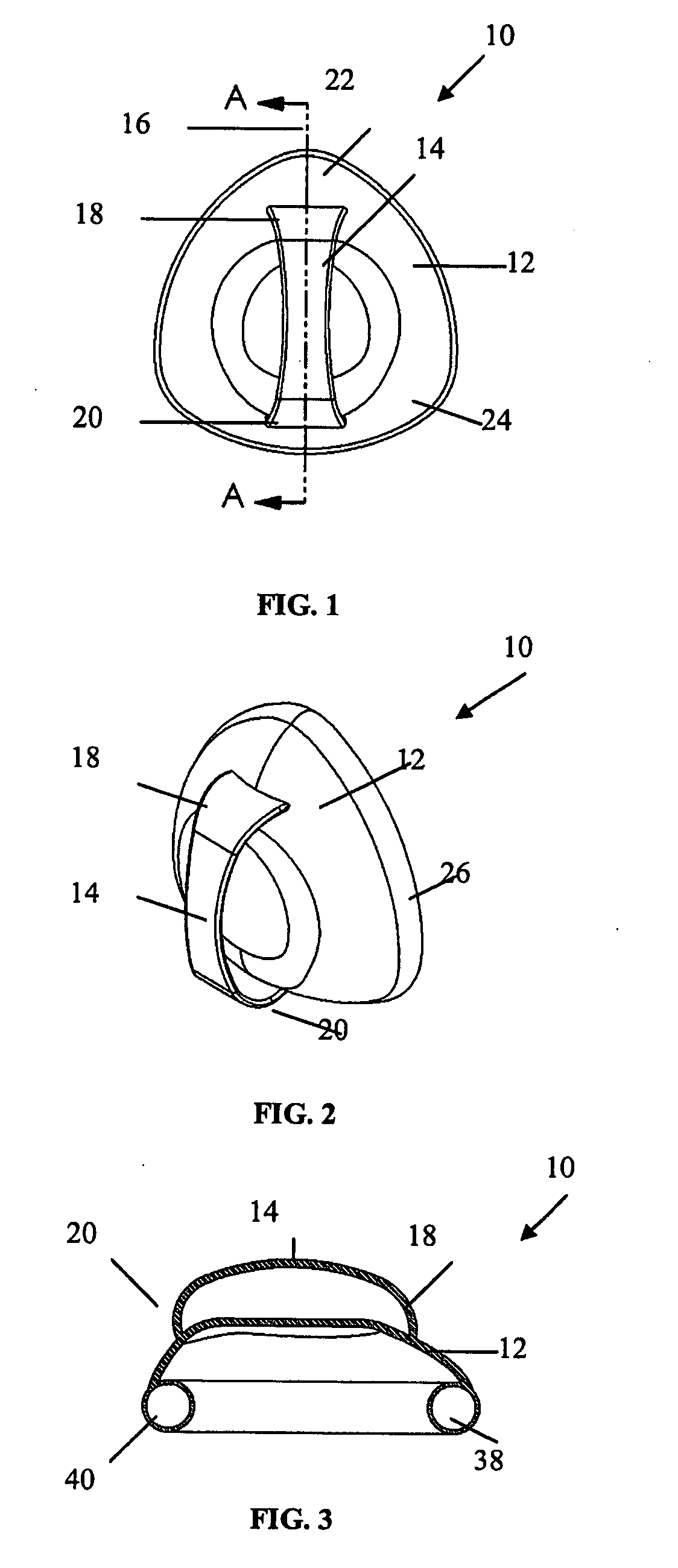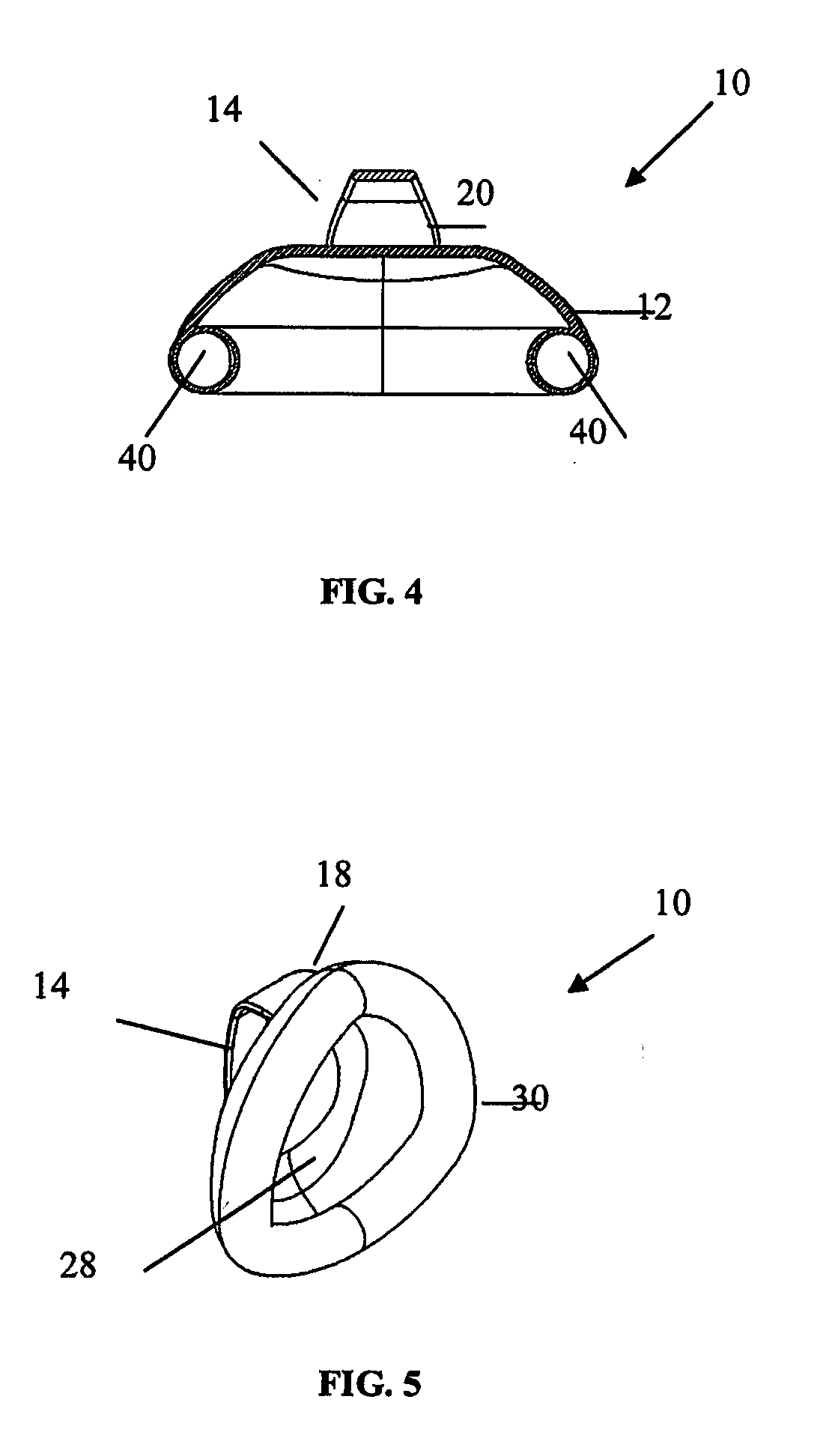Cough assistance and airway clearance device
a technology of airway clearance and assistance, which is applied in the field of respiratory congestion treatment, can solve the problems of not always embraced, little medical assistance that can be provided, and insufficient understanding of the technique of parents, and achieve the effect of great flexibility in hand and wrist movemen
- Summary
- Abstract
- Description
- Claims
- Application Information
AI Technical Summary
Benefits of technology
Problems solved by technology
Method used
Image
Examples
first embodiment
[0042]In the present invention, a handle 14 of substantially uniform relative wall thickness is attached to the dome. The handle 14 varies in width from the central horizontal cross section 16, taken along line A-A and viewable in FIG. 1, to ends 18 and 20 that contact the dome. This provides an expanding contact surface area along the handle 14 so that a variety of users can use the inventive apparatus optimally. Users with smaller hands can position their hands along the central portion of the handle 14 for maximum effectiveness. Users with larger hands do not need to grip the handle 14 tightly as placement on the expanding contact areas towards ends 18 and 20 will allow these users to maintain a natural hold on the handle during implementation of the apparatus. The handle 14 provides a method by which the device 10 may be used in a most effective way, by sliding a user's fingers around the handle 14 to provide for the greatest flexibility in palm and wrist movement. There is no g...
second embodiment
[0049]FIG. 6 is a photograph of a physical model of the manual respiratory device according to the invention. The photograph shows the annular loop or ring 28 as removably attached to the compressive area 26 of the device. The attachable loop or ring is configured similarly to the compressive area 26, in that it has a smaller proximal portion 32 and a larger distal portion 34 to fit the dimensions of compression area 26. The rim 34 allows the loop or ring 28 to fit tightly over the compression area 26 so as to remain fully attached during implementation of the device 10.
third embodiment
[0050]In the present invention, and with reference to FIG. 7, a manual respiratory device 10′ is provided with a left handle 42 and a right handle 44 attached to a flat portion of the outer shell 12 of the dome. The ergonomic handles 42 and 44 are curved and vary in width from the end of the handles to the base 46. The end of the handles 42 and 44 form the narrowest portion, as the width increases gradually towards the base 46. A side view of the device according to this embodiment is illustrated in FIG. 8. FIG. 8 shows handle 42, wherein an inner surface 48 is viewable. The side view is exemplary of the increasing handle width from the end of the handle to the base 46.
[0051]The expanding contact surface areas along the handles 42 and 44 are provided so that a variety of users can use the inventive apparatus optimally. Users with smaller hands can position their hands along the curve of handles 42 and 44 for maximum effectiveness. Users with larger hands do not need to grip the hand...
PUM
 Login to View More
Login to View More Abstract
Description
Claims
Application Information
 Login to View More
Login to View More - R&D
- Intellectual Property
- Life Sciences
- Materials
- Tech Scout
- Unparalleled Data Quality
- Higher Quality Content
- 60% Fewer Hallucinations
Browse by: Latest US Patents, China's latest patents, Technical Efficacy Thesaurus, Application Domain, Technology Topic, Popular Technical Reports.
© 2025 PatSnap. All rights reserved.Legal|Privacy policy|Modern Slavery Act Transparency Statement|Sitemap|About US| Contact US: help@patsnap.com



